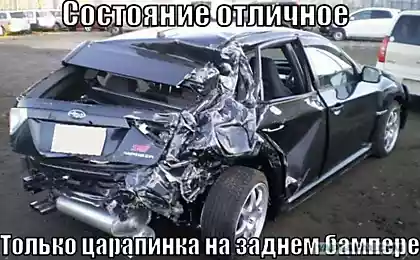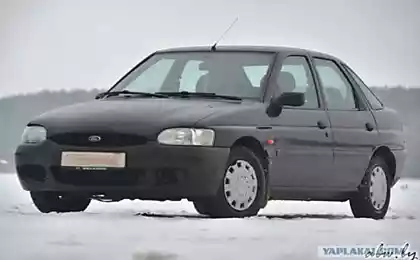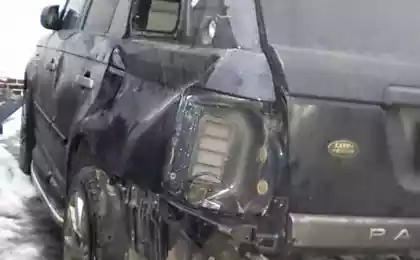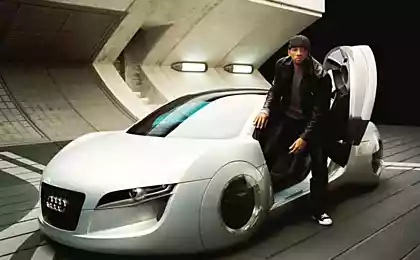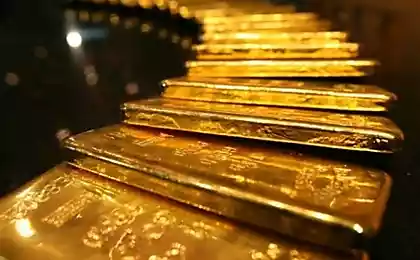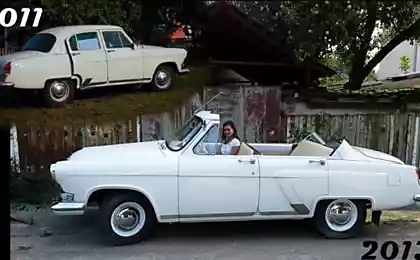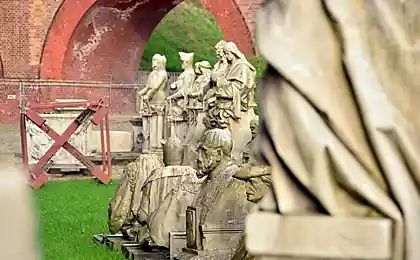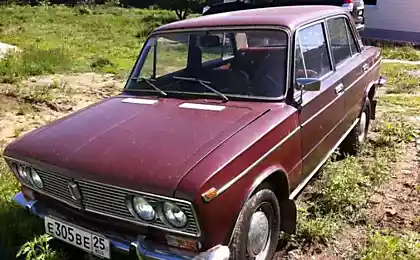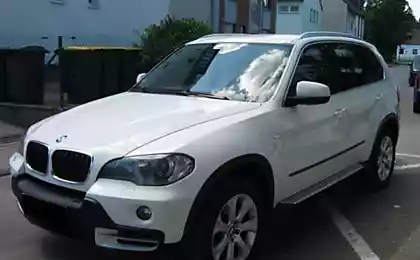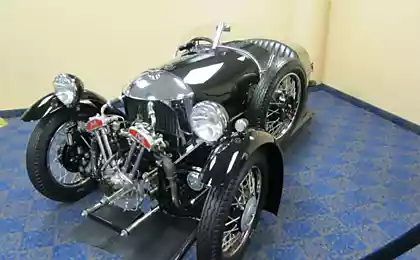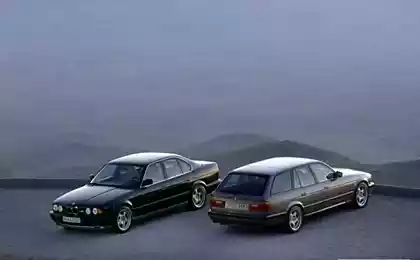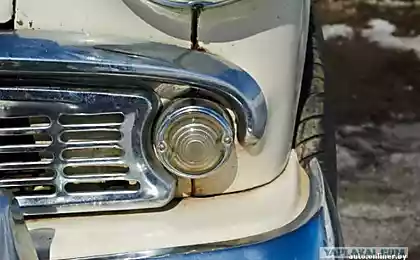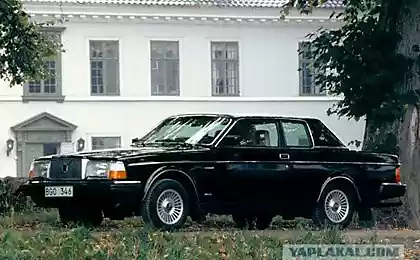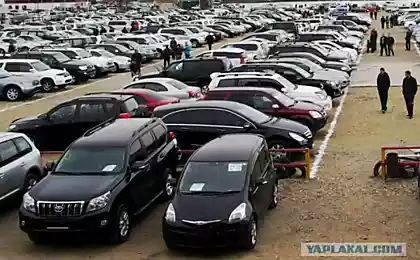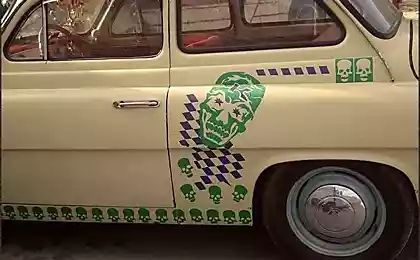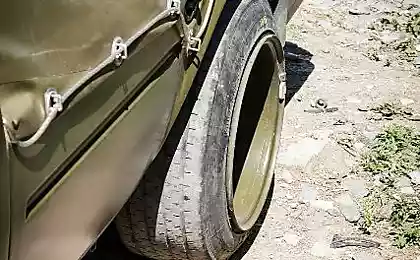740
"Truby" does not rust
20 pictures via motorru
What kind of memory left behind the most massive car GDR
In June in the German city of Zwickau died Designer Werner Lang, creator of one of the most popular European cars - Trabant. This car is not issued for more than 20 years, but because of its immense popularity and the memory of it will remain for a long time its constructor. And not only because the body "Trabant" did not corrode.
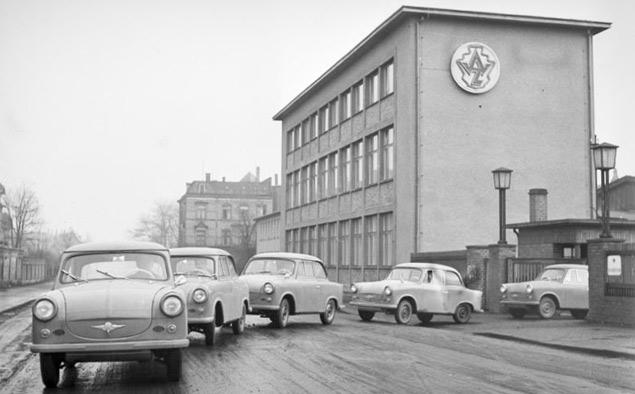
The model, introduced in 1957 and produced until 1991, became for the inhabitants of East Germany, the personification of an era. After the partition of Germany in the late 1940s, the leadership of the young state of the GDR set out to create a massive car, which would be available to the general public.
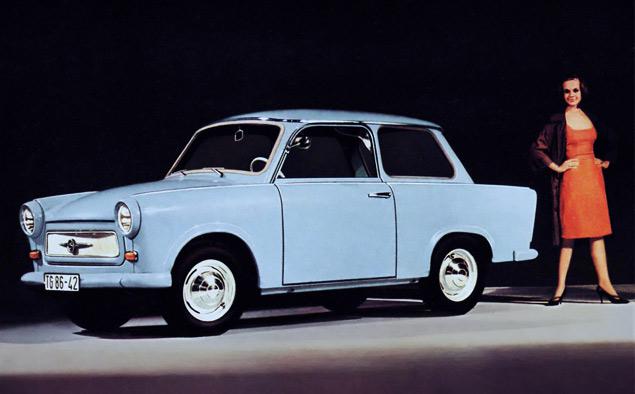
As a result, the plant in Zwickau was arranged production car with a plastic body (metal after the Second World were in short supply) and 18 hp (later 26 hp) two-stroke engine. The simplicity and low cost of construction done their job - Trabant became a kind of East German version of the Ford T, planted a whole nation on wheels.
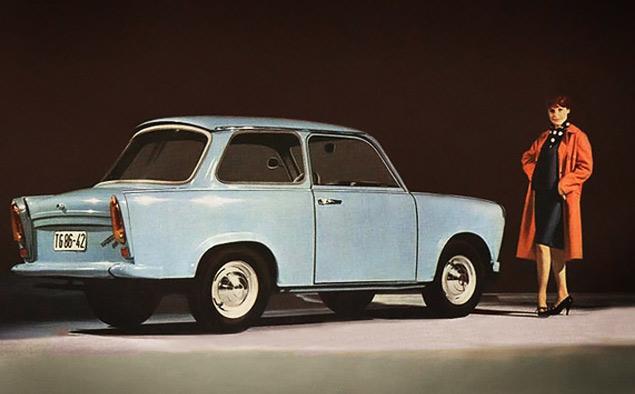
4.
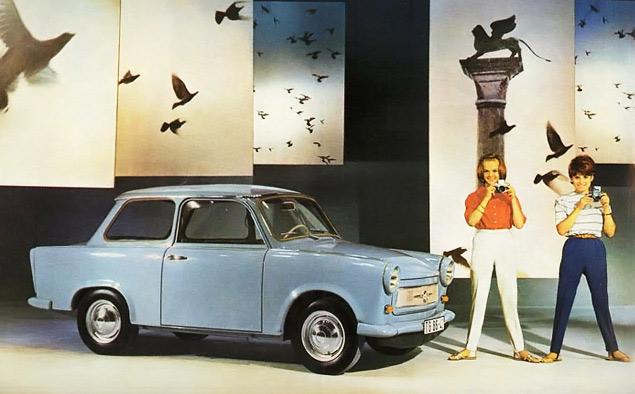
5.
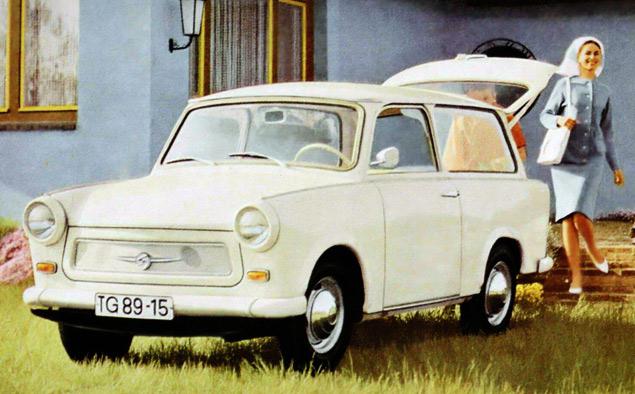
Total assembly line produced more than three million cars. Given that the population of East Germany in the late 1980s was 16 million people, for every five residents of East Germany accounted for almost one "Trabant". However, for the coveted "Truby" Germans queued up, the duration of which sometimes reaches more than ten years.
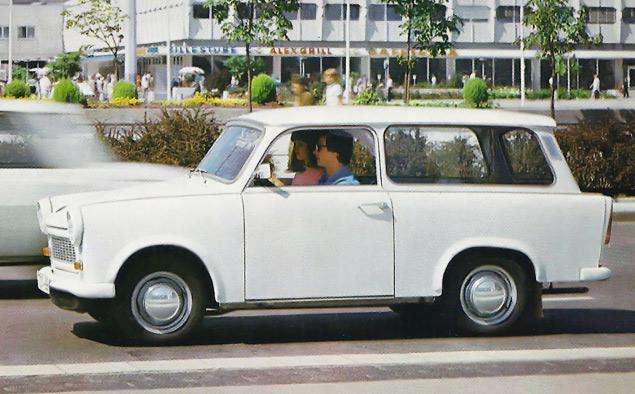
In addition, cars are exported in large quantities. And they were delivered not only in friendly countries, but also in the capitalist countries - Greece, the Netherlands, Belgium, South Africa. In many countries there are still fans of the legendary clubs, which became a symbol of East Germany, leaving behind a rich legacy. "Motor" collected the most interesting examples of perpetuating the memory of the plastic "Truby».
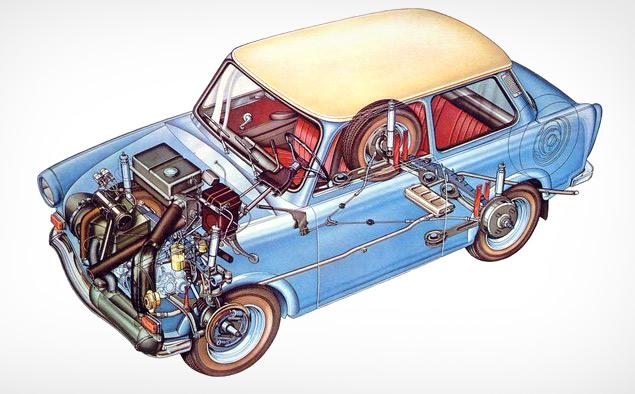
Despite the fact that the current roads this car is already a rarity, "Trabant" sometimes you can meet in the most unexpected places.
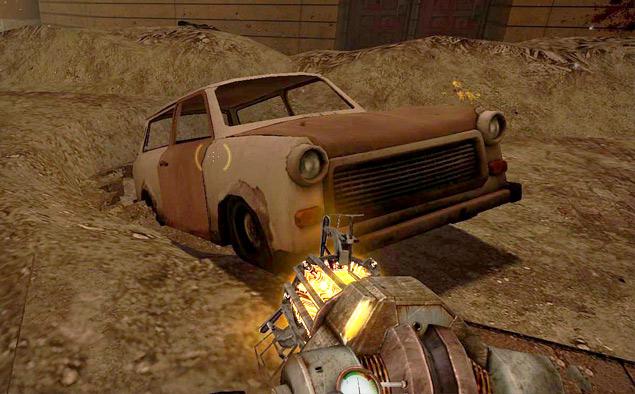
As skidded cult Trabant in 3D-shooter Half-Life 2? In fact, cars are in a virtual post-apocalyptic game world is no accident. In the development of locations "shooter", the designers took as the basis Eastern European architecture, including its stylistic trends of the 1970s. It was then that "satellites" have been an integral part of the townscape of the socialist camp.
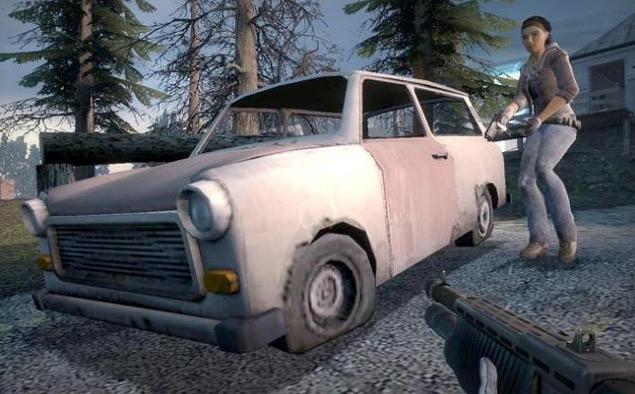
"At one time," Trabant "smelled the whole country," - says Torsten Yang, who sells cans with "Truby Fragrance" at the price of four euros. He contends that really fills their car exhaust fumes, which can smell even two weeks after unsealing "canned».
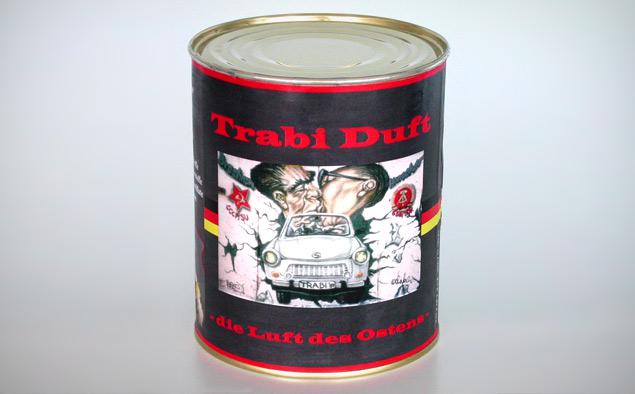
11.
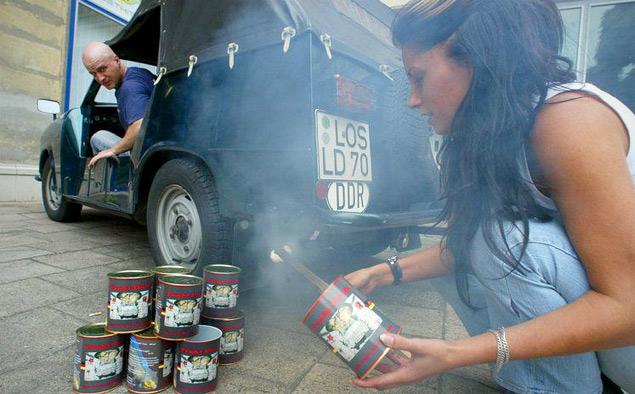
Several "Truby" psychedelic coloring were used as lighting in the world concert tour of the Irish group U2 - Zoo TV Tour, which began in February 1992 and lasted until 1993. The idea of the original use of cars that represented the fall of communism, was born in musicians while working on the album Achtung Baby, which was recorded in Berlin.
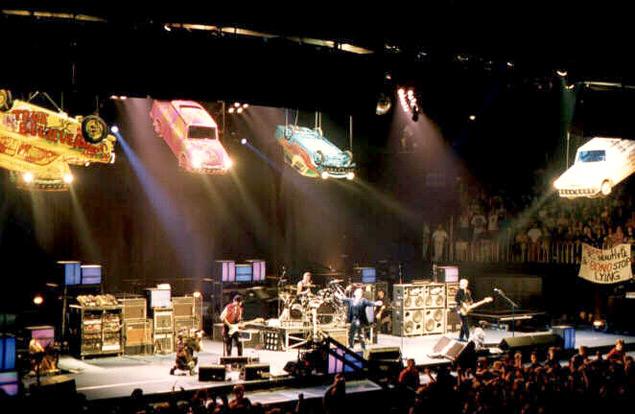
Some of the "Lighting Trabant" found refuge in Berlin and Dublin Hard Rock Cafe.
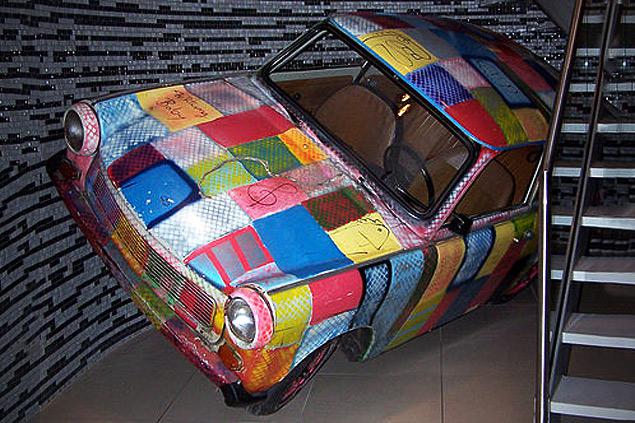
After the fall of the "Iron Curtain" The Berlin Wall has become a many kilometers an exhibition of graffiti, which could not fail to appear one of the symbols of East Germany. Trabant and the historic Kiss the secretary general of the USSR Leonid Brezhnev and Erich Honecker the GDR head are among the most common topics of the then creativity of street artists.
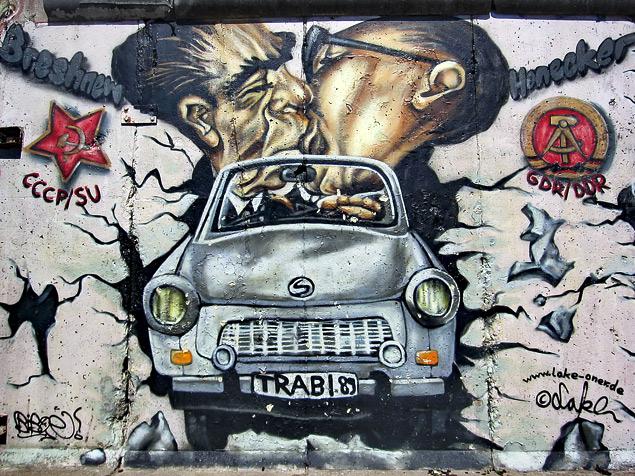
In his native Zwickau car even erected a monument. "Truby" is considered one of the most famous "residents", along with the famous pianist and composer Robert Schumann and the car industry pioneer August Horch.
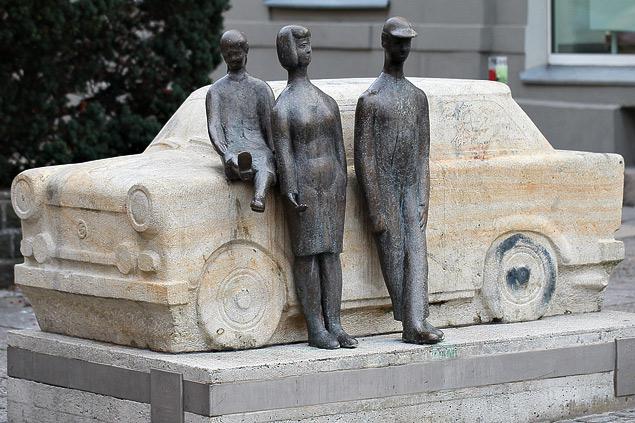
Another model of the monument was erected in 1989 in the center of Prague. The sculpture, entitled «Quo Vadis» («Where are you going") is devoted to political refugees from East Germany, who left the country in the "Trabant».
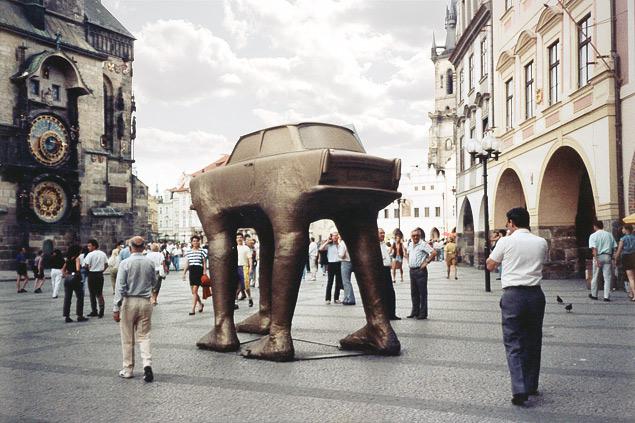
Now this monument "walks" on the territory of the German Embassy in the Czech Republic.
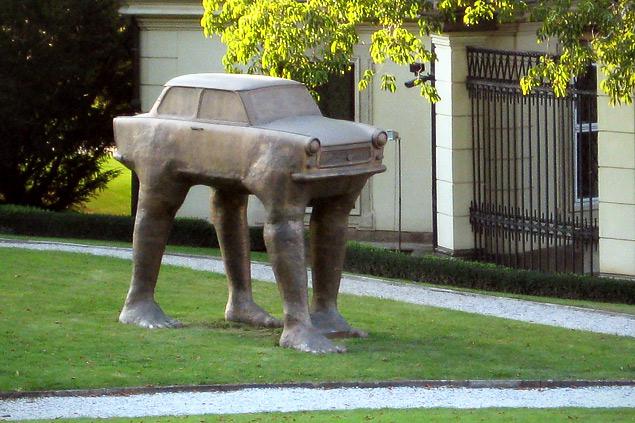
Another stone statue of a model with a plastic body has found its place in the park of sculptures at the National Art Gallery in Sofia, Bulgaria.
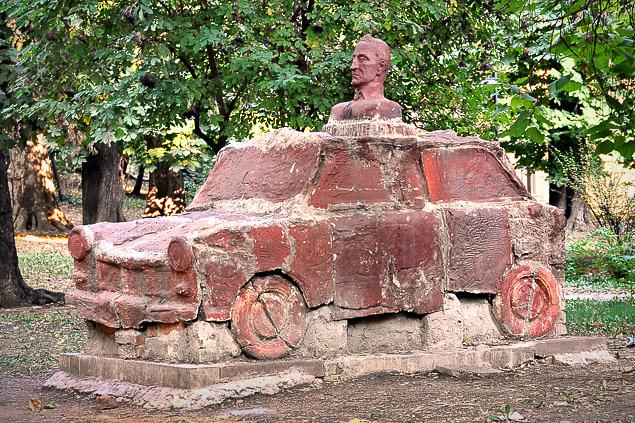
If someone adorns itself images of cars, it usually fills mnogosilnye sports cars, but not a small car with a two-stroke engine. Specifically, for a host of tattoos "Truby" it means much more than just a "means of transportation».
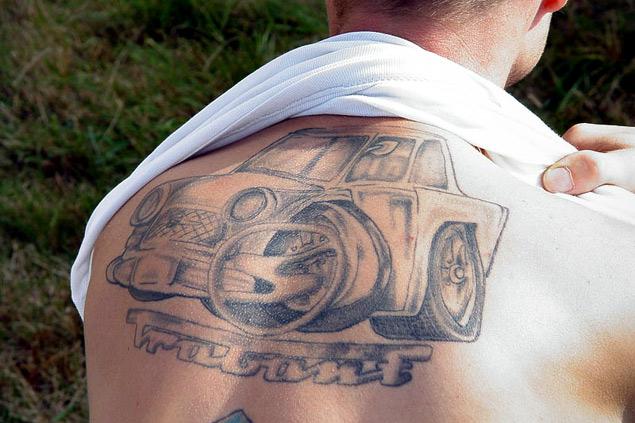
Roof "Truby" mounted on a metal stele in the former East Germany, was chosen a couple of storks nest rolled up there. People now do not need it, but the birds at the time.
The end.
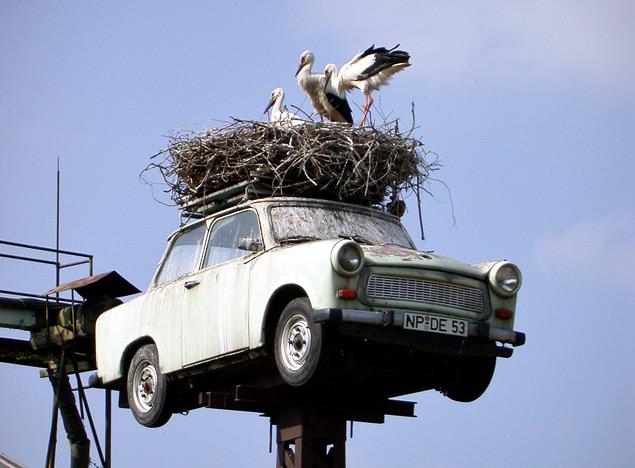
Source:
What kind of memory left behind the most massive car GDR
In June in the German city of Zwickau died Designer Werner Lang, creator of one of the most popular European cars - Trabant. This car is not issued for more than 20 years, but because of its immense popularity and the memory of it will remain for a long time its constructor. And not only because the body "Trabant" did not corrode.

The model, introduced in 1957 and produced until 1991, became for the inhabitants of East Germany, the personification of an era. After the partition of Germany in the late 1940s, the leadership of the young state of the GDR set out to create a massive car, which would be available to the general public.

As a result, the plant in Zwickau was arranged production car with a plastic body (metal after the Second World were in short supply) and 18 hp (later 26 hp) two-stroke engine. The simplicity and low cost of construction done their job - Trabant became a kind of East German version of the Ford T, planted a whole nation on wheels.

4.

5.

Total assembly line produced more than three million cars. Given that the population of East Germany in the late 1980s was 16 million people, for every five residents of East Germany accounted for almost one "Trabant". However, for the coveted "Truby" Germans queued up, the duration of which sometimes reaches more than ten years.

In addition, cars are exported in large quantities. And they were delivered not only in friendly countries, but also in the capitalist countries - Greece, the Netherlands, Belgium, South Africa. In many countries there are still fans of the legendary clubs, which became a symbol of East Germany, leaving behind a rich legacy. "Motor" collected the most interesting examples of perpetuating the memory of the plastic "Truby».

Despite the fact that the current roads this car is already a rarity, "Trabant" sometimes you can meet in the most unexpected places.

As skidded cult Trabant in 3D-shooter Half-Life 2? In fact, cars are in a virtual post-apocalyptic game world is no accident. In the development of locations "shooter", the designers took as the basis Eastern European architecture, including its stylistic trends of the 1970s. It was then that "satellites" have been an integral part of the townscape of the socialist camp.

"At one time," Trabant "smelled the whole country," - says Torsten Yang, who sells cans with "Truby Fragrance" at the price of four euros. He contends that really fills their car exhaust fumes, which can smell even two weeks after unsealing "canned».

11.

Several "Truby" psychedelic coloring were used as lighting in the world concert tour of the Irish group U2 - Zoo TV Tour, which began in February 1992 and lasted until 1993. The idea of the original use of cars that represented the fall of communism, was born in musicians while working on the album Achtung Baby, which was recorded in Berlin.

Some of the "Lighting Trabant" found refuge in Berlin and Dublin Hard Rock Cafe.

After the fall of the "Iron Curtain" The Berlin Wall has become a many kilometers an exhibition of graffiti, which could not fail to appear one of the symbols of East Germany. Trabant and the historic Kiss the secretary general of the USSR Leonid Brezhnev and Erich Honecker the GDR head are among the most common topics of the then creativity of street artists.

In his native Zwickau car even erected a monument. "Truby" is considered one of the most famous "residents", along with the famous pianist and composer Robert Schumann and the car industry pioneer August Horch.

Another model of the monument was erected in 1989 in the center of Prague. The sculpture, entitled «Quo Vadis» («Where are you going") is devoted to political refugees from East Germany, who left the country in the "Trabant».

Now this monument "walks" on the territory of the German Embassy in the Czech Republic.

Another stone statue of a model with a plastic body has found its place in the park of sculptures at the National Art Gallery in Sofia, Bulgaria.

If someone adorns itself images of cars, it usually fills mnogosilnye sports cars, but not a small car with a two-stroke engine. Specifically, for a host of tattoos "Truby" it means much more than just a "means of transportation».

Roof "Truby" mounted on a metal stele in the former East Germany, was chosen a couple of storks nest rolled up there. People now do not need it, but the birds at the time.
The end.

Source:
